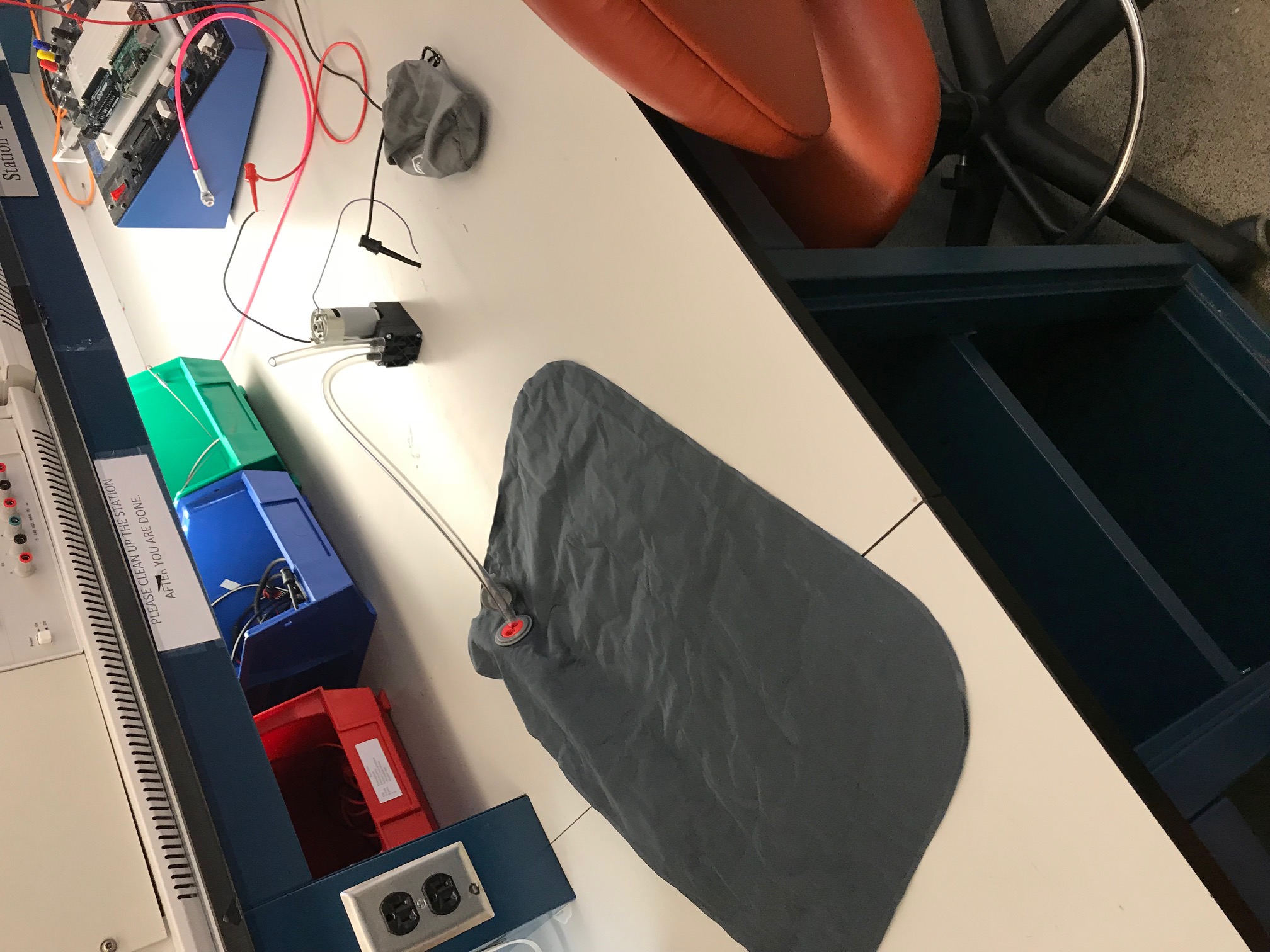Week 2!
While for week 1 we spent most of our time just figuring out how the things we had worked, in week 2 we started figuring out how to use the parts for the purposes of our project. For this week, the parts we got were:
- Smaller motor that could be controlled through an mbed
- Tubing to connect to our motor and our solenoids
- A 3d printed part to connect the motor to the pillow opening.
In this week, we first spent a good amount of our time trying to figure out how to supply the power needed for our project. In this project, our solenoids and motor both draw an extreme amount of current (up to 3 Amps) and require voltages of up to 24 V so we spent a lot of time trying to figure out how to still use the mbed to cycle voltage and current supply while also using the external power sources to actually supplied the needed power. To solve this, we figured out we could use a transistor and have the mbed connect to the gate to cycle current flow and no current flow. The overall circuit with the motor connected to the output of the transistor can be seen below.
Overall Circuit:

The next thing we worked on was expanding the pressure network from 1 small square to 4 larger sheets that could be pressed on and have the pressure change detected on the mbed. We first tried using small squares like before in series with 100k ohm resistors, but the pressure change was almost impossible to detect on the mbed. As a result, we decided to create strips of the pressure sheet that were folded and layered (using eletrical tape between layers so as to keep them together without effecting conductivity) the sheets together. Once we had done this, it was much easier to detect changes in pressure when pressed or not pressed on. These sheets can be seen below:
Pressure Sheets:


Finally, we worked on using our 3d printed part to actually inflate the pillow. As can be seen in the picture below, the tubing connected to the motor connects directly into the part into the pillow and the part fits perfectly into the pillow to prevent any leakage. As such, we can turn on the motor, and control the inflation of the pillow.
Motor connected to pillow:

